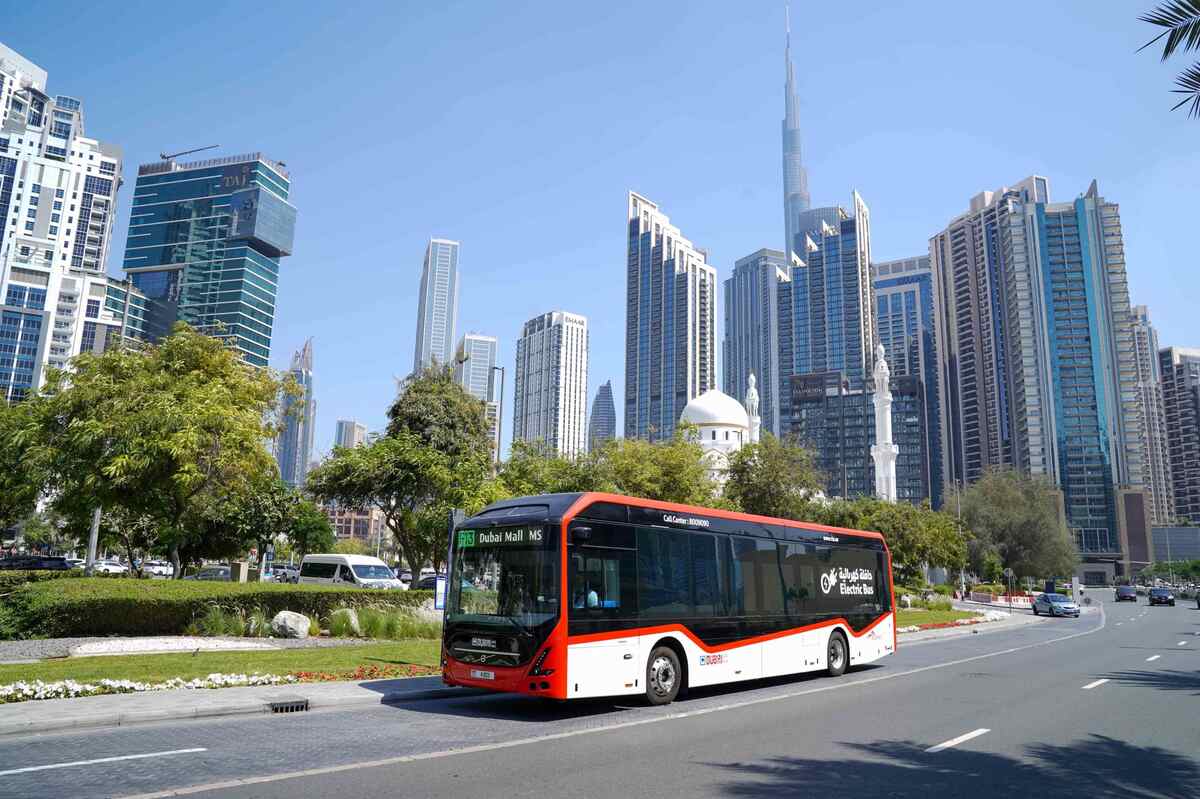Dubai’s Roads and Transport Authority (RTA) has recently launched the pilot operation of a new electric bus on Route F13, a feeder service to metro stations. The route starts from Al Quoz Bus Depot and passes through key destinations, including Burj Khalifa, The Palace Downtown Hotel and Dubai Fountain, before terminating at the Dubai Mall Metro Bus Stop (South).
“The technologies integrated into the new electric bus, manufactured by Volvo, will enable RTA teams to collect data that supports the adoption of new concepts and specifications for future buses, enhancing both performance and safety throughout the journey,” stated Marwan Al Zarooni, director of buses at RTA’s Public Transport Agency.
He explained that through this trial, RTA will monitor the environmental benefits of operating the electric bus within the Public Transport Agency’s fleet on a high-demand route with actual passengers.
RTA targets zero-emission mobility by 2050
Dubai’s RTA aims to operate smart, eco-friendly public transport systems supported by innovative technology, reinforcing its commitment to transforming all public transport into zero-emission mobility by 2050. This initiative ensures seamless and sustainable transportation across Dubai.
The electric bus is equipped with cutting-edge technologies, including advanced features such as high-definition cameras and screen systems that replace traditional mirrors and a transparent head-up display that projects essential driving information onto the front windscreen to support driver awareness and other smart systems.
Trial to assess vehicle’s ability under varying weather conditions
The bus has been designed to suit Dubai’s local environmental conditions and is equipped with innovative smart technologies and modern specifications. These include a best-in-class air conditioning system and high-capacity batteries with 470 kWh of storage—the largest of any electric bus previously tested in RTA’s fleet.
When fully charged, the bus can travel up to 370 km. It is a 12-meter-long city bus with a total capacity of 76 passengers, including 41 seated and 35 standing.
The trial will assess the reduction in carbon emissions, the real-world range achieved on a full charge, and the vehicle’s ability to meet operational requirements under varying weather conditions, particularly during summer.








